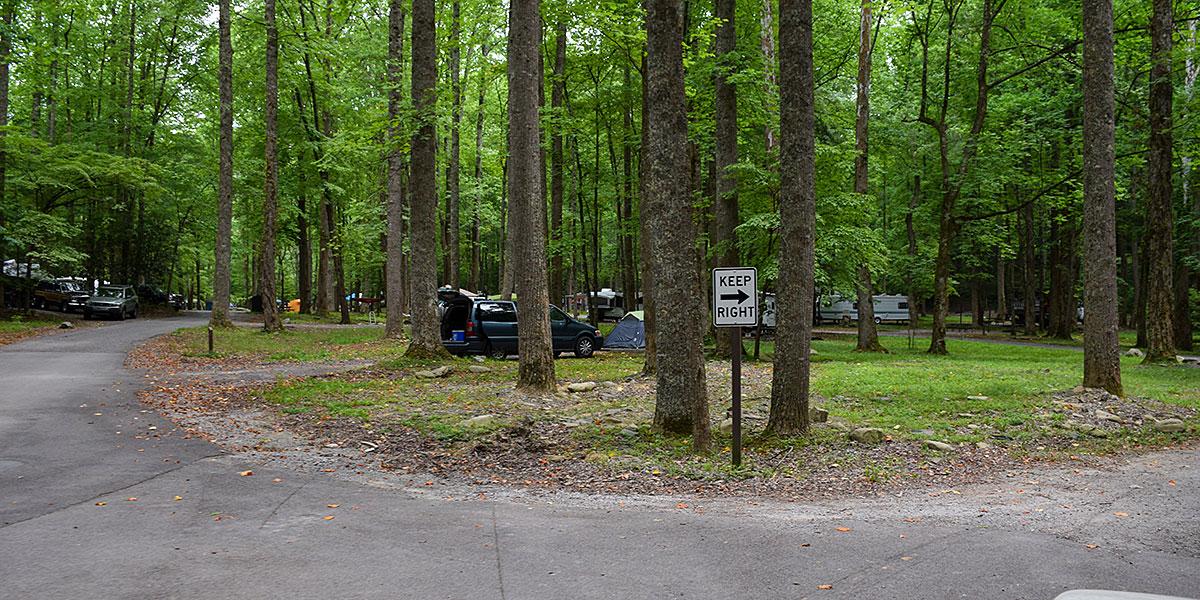
Blog for Zipline Attraction in the Smoky Mountains
Located in Pigeon Forge, TN and near Gatlinburg and Sevierville.
How to Plan the Perfect Camping Trip in the Smoky Mountains
By Ross Bodhi Ogle
Posted on November 26, 2024

The Great Smoky Mountains National Park is a stunning destination for anyone looking to escape into nature. Whether you're an experienced backpacker or a weekend warrior, camping in the Smokies offers unparalleled beauty, rich biodiversity, and endless outdoor adventures. If you're planning your first (or next) camping trip to this iconic park, here's a comprehensive guide to help you make the most of your time in the mountains.
Choose the Right Time of Year
The Smoky Mountains are a year-round destination, but the experience can vary greatly depending on the season.
- Spring (March to May): This is one of the best times to visit. The weather is mild, wildflowers are in full bloom, and the crowds are lighter than in summer. Spring also brings the chance to see migrating birds and baby wildlife.
- Summer (June to August): Summer is peak season in the park, with warm weather and long days. Expect more visitors, especially at popular spots like Clingmans Dome and Cades Cove. If you're visiting in summer, make sure to reserve your campsite early.
- Fall (September to November): Fall is one of the most magical times in the Smokies. The fall foliage, typically peaking in mid-October, creates a vibrant tapestry of reds, yellows, and oranges. This is also a popular time for camping, so book your site in advance.
- Winter (December to February): Winter offers solitude and a unique quietness in the park, with fewer tourists and a serene, snowy landscape. It can be cold, and some campsites might close due to weather, but if you're prepared, winter camping can be an unforgettable experience.
2. Choose the Right Campsite
The Smoky Mountains offer a wide range of camping options, from developed campgrounds with amenities to primitive backcountry sites for those seeking solitude. Here's a breakdown:
Frontcountry Campgrounds: These are the more developed campgrounds, offering amenities like picnic tables, fire rings, restrooms, and sometimes even showers. Popular ones include:
- Elkmont Campground: One of the largest and most popular campgrounds, offering easy access to hiking trails like the Alum Cave Trail and the Appalachian Trail.
- Cades Cove Campground: Set in the park's most famous valley, this campground is perfect for wildlife viewing and is a short drive to historic sites and great hiking.
- Smokemont Campground: Located near the Oconaluftee Visitor Center, this site offers a great base for exploring the southern part of the park.
Backcountry Campsites: For those seeking a more rugged experience, the Smokies have over 100 backcountry campsites. These are accessible only via hiking, so you'll need to be prepared for a more remote experience. Popular backcountry hikes include:
- Gregory Bald: A challenging hike that rewards with stunning panoramic views of the Smokies.
- Spence Field: A beautiful site with great views, located on the Appalachian Trail.
- Troop 80 Campsite: A quieter option that offers seclusion and scenic beauty.
Tip: Make sure to reserve your frontcountry campsite ahead of time, especially during peak seasons. For backcountry sites, you'll need to secure a permit through the park's reservation system.
Plan Your Activities
The Smokies offer an abundance of outdoor activities to make your camping trip memorable. Here's a selection of activities you shouldn't miss:
Hiking: With over 850 miles of trails, hiking is the number one activity in the park. Some notable trails include:
Clingmans Dome Trail: This short, paved trail leads to the highest point in the park and offers panoramic views of the Smokies.
Alum Cave Trail: A moderate 5-mile round-trip hike that features breathtaking views and unique geological formations.
Laurel Falls Trail: A family-friendly, easy hike that leads to the park's most popular waterfall.
Wildlife Watching: The Smoky Mountains are teeming with wildlife, including black bears, white-tailed deer, elk, and wild turkeys. Early mornings and dusk are the best times for wildlife viewing, particularly in areas like Cades Cove.
Fishing: The park is home to more than 2,000 miles of streams, many of which offer excellent fishing opportunities. Be sure to get a fishing license from the state of Tennessee or North Carolina before casting your line.
Scenic Drives: The park features several scenic drives, such as the Newfound Gap Road, which offers sweeping views and easy access to numerous trailheads. Fall is particularly stunning along these routes.
Photography: With its mist-covered mountains, cascading waterfalls, and diverse ecosystems, the Smokies are a photographer's paradise. Sunrise at Clingmans Dome or sunset at Cades Cove are both popular photography spots.
Pack the Right Gear
The key to a successful camping trip is proper preparation. Here's a packing checklist to help you get started:
Camping Essentials: Tent, sleeping bag, sleeping pad, and camping stove.
Clothing: Layers are crucial in the Smokies as temperatures can vary widely, especially at higher elevations. Bring moisture-wicking clothes, a rain jacket, sturdy hiking boots, and a warm hat.
Food & Water: Plan your meals carefully and bring a cooler with perishable items. Don't forget a water filter or purification tablets if you plan to drink from streams in the backcountry.
Navigation Tools: A map of the park and a compass (or GPS) are essential for navigating both frontcountry and backcountry trails.
Safety Gear: A first aid kit, insect repellent, sunscreen, and a headlamp or flashlight are must-haves.
Extras: A camera, binoculars for wildlife watching, and a journal to document your adventures.
Know the Rules
Before heading out, make sure you're familiar with the park's regulations. Some key points include:
Campfires are only allowed in designated fire rings.
Pets are allowed in campgrounds and along certain trails but must be kept on a leash.
Backpackers must carry a permit for backcountry campsites.
All fishing must be done using park-approved gear and methods.
Final Thoughts
The Smoky Mountains offer a truly magical camping experience, with endless opportunities for outdoor exploration and relaxation. Whether you're looking to hike to a stunning vista, spot wildlife in the early morning light, or simply enjoy the serenity of the mountains, planning your camping trip carefully will ensure that you have an unforgettable time. With the right preparation, you'll be ready to immerse yourself in one of the most beautiful natural landscapes in the United States. It you love camping in the outdoors, you might like a canopy on our ziplines course.
Happy camping!

